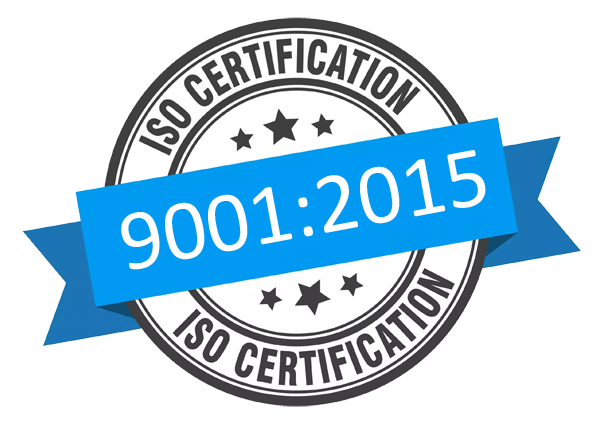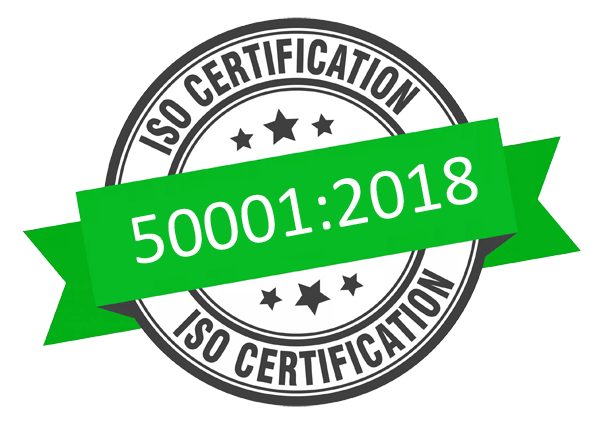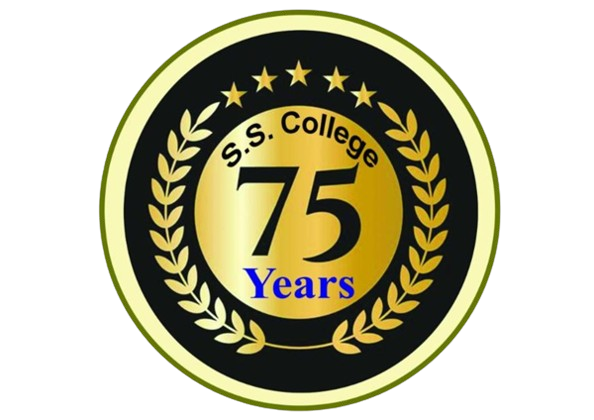Department of sripath_final_reg_for_website.htm
1st sem HONS. History Syllabus
UNIVERSITY OF KALYANI
DEPARTMENT OF HISTORY
Structure of the revised syllabus for B.A. Honours/Programme course for
semester-wise CBCS curriculum
Core Course
( 14 Courses, Each Course would be allotted 40 lectures)
Semester-1
Course – I
History of Early India, from remote past to the end of the Vedic Polity
Unit-1: Historiography of early India – historical interpretations - imperialist vs nationalist
school - leftist vs liberal school - secular vs religious school.
Unit-2: Evolution from paleolithic to neolithic cultures - chalcolithic societies from Baluchistan
to Gujrat - growth and decline of pre-state non-iron urban culture - the Harappan Civilization ;
problem of the Indus script - journey from proto-historic to historic India.
Unit-3: Legacy of the Harappan Culture - the Aryan penetration and the Anglo-Oriental debate ;
beginning of iron age and settled agriculture - patterns of settlement and cultural changes -
emergence of caste society, organized religion and state territoriality - the Vedic literature.
Unit-4:The non-Vedic political economy of the 16 Mahajanapadas - spread of protestant
religions – Ajivikism, Jainism and Buddhism ; commercial and urban growth of India - rise of
Magadha as an imperial power.
Reading
1. D. D. Kosambi : The Culture and Civilization of Ancient India in Historical Outline
2. A. L. Basam : The Wonder that was India.
3. Irfan Habib : Pre-History ; Indus Civilization (2002) : The Vedic Age (2003)
4. Romila Thapar : Early India from the Beginning to 1300
5. Upinder Singh : A History of Ancient and Early Medieval India.
6. R.S.Sharma : India’s Ancient Past.
7. Bridget and Allchin : The Rise of Civilization in India and Pakistan.
8. Uma Chakraborty : The Social Dimensions of Early Buddhism.
Course – II
Social Formation and Cultural pattern of the Ancient and early Medieval World
Unit-1: Pre-historic and proto-historic cultures beyond India – beginning of agriculture and
animal husbandry – searches into the history of Africa, the Aztec Civilization and the Inca
Society.
Unit-2: Bronze Civilizations of Egypt, Mesopotamia, China and eastern Mediterranean lands.Unit-3: The Polis and slave society of ancient Greece - rise of ancient Rome – decline of the
Roman Empire – agrarian economy and trade – the Church and the question of religion.
Unit-4: Societies in Central Islamic Lands - spread of Islam – the Ummah, Caliphite State,
Shariah and Sufi culture.
Reading
1. Oxford History of the Classical World
2. Burns and Ralph : World Civilizations
3. V. Gordon Childe : What Happened in History
4. Amar Farooqui : Early Social Formations.
5. R.T.Matthews and F. DeWitt Platt : Western Humanities
6. J. Kelley Sowards : Western Civilization
7. Jacquetta Hawkes : First Civilizations
8. M.G.S. Hodgson : The Venture of Islam
| Slr | File Name | Download |
|---|---|---|
| 1 | department/VJRC_7f3b4a22_History-HonsGenCBCSSyallabi-2018_(1).pdf | Download |
Three years History (CBCS) Hons. + General Syllabus
| Slr | File Name | Download |
|---|---|---|
| 1 | department/ssc_web_ff91e452_History-HonsGenCBCSSyallabi-2018_(1).pdf | Download |
2ND SEM HONS. SYLLABUS
Semester-2
Course-III
Ancient India from the Maurya to Late Gupta period
Unit-1:The Maurya rule in Magadha - Asoka’s Dhamma and administration - the policy of
cultural conquest.
Unit-2: The post-Maurya India of the Kushanas, Satavahanas and Tamil powers, Chera,Chola
and Pandya - new trends in economy and society – peasantization of tribes and changes in the
caste system ; spread of megalithic culture - splits in Jainism and Buddhism - Vaishnavism,
Saivism and Tantricism.
Unit-3: Age of the Guptas - consolidation of Second Magadhan empire - debates on golden age,
brahminical revival and growth of feudalism - decline of the Gupta power and beginning of
political decentralization of India - assessing Harshavardhana as the last great emperor.
Unit-4: Early India in retrospect – society and culture and environment - literature and
philosophy - art and architecture - science, technology and guild - trade and industry.
Reading
1. Romila Thapar : (i) Ancient India ; (ii) Asoka and the Decline of the Mauryas
2. D.D. Kosambi : An Introduction to the Study of Indian History
3. Irfan Habib : The Mauryan India
4. R.S.Sharma : Indian Feudalism
5. S.K.Maity : Economic Life in Northern India in the Gupta Period
6. B.P.Sahu ed. : Land System and Rural Society in Early India7. Susan Huntington : The Art of Ancient India
8. D.P.Chattopadhyay : History of Science and Technology in Ancient India
Course-IV
History of Early Medieval India
Unit-1: Sources of History and historiography of the period - contemporary texts and travelogues
- indigenous literature and archaeology.
Unit-2: From centralized to decentralized India - The Rajputs of North India - Palas and Senas
in Bengal - Kingdoms of the South – The Pallavas, Rashtrakutas, Chalukyas and Cholas.
Unit-3: Condition in the pre-Sultanate period - Polity, Society, Economy, Religion and Culture -
towards transition.
Unit-4: Northern India under the Delhi Sultanate - the Turkish invasions from 997 to 1206 AD -
consolidation of the Sultanate from 1206 to 1286 AD - the Khalji Revolution and the omnipotent
state under the Khaljis - The Tughluq period of reforms and counter reforms - decline of the
Delhi Sultanate.
Reading
1. B.D.Chattopadhyay : The Making of Early Medieval India
2. Satish Chandra : The Delhi Sultanate
3. R.S.Sharma and K.M.Srimali eds. : Comprehensive History of India, Vol. IV
4. Md. Habib and K.A.Nizami eds. : Comprehensive History of India, Vol V
5. Hermann Kulke ed.: The State in India (AD 1000 – 1700)
6. Irfan Habib : Medieval India – The Study of a Civilization
7. N. Karashima : South Indian History and Society
8. Salma Farooqui : A Comprehensive History of Medieval India
3RD SEM HONS. SYLLABUS
Semester-3
Course – V
The Delhi Sultanate in Retrospect
Unit-1: The successor states of Bijoynagar, Bahmani and Bengal - society, economy, art,
architecture and literature.
Unit-2: Delhi on the eve of the Mughal ascent - Timur’s invasion - the Sayyids and Lodis -
Babur’s adventure - Babur’s central Asian connection - Humayun’s misfortune - Sher Shah Sur
and Afghan rule in India.Unit-3: Economy of Sultanate India - changes in land revenue administration - new agrarian
relations - industry and urbanization - trade and currency.
Unit-4: Ideas of state and kingship - moves from theocracy to secular administration -
development of bhakti and sufi philosophy - language, literature, art and architecture.
Reading
1. A.L.Srivasva : The Sultanate of Delhi
2. S.A.A.Rizvi : The Wonder that was India
3. Satish Chandra : Medieval India-1, The Delhi Sultanate
4. Peter Jackson : The Delhi Sultanate
5. Hermann Kulke ed.: The State in India (AD 1000 – 1700)
6. Irfan Habib : Medieval India – The Study of a Civilization
7. N. Karashima : South Indian History and Society
8. Salma Farooqui : A Comprehensive History of Medieval India
Course - VI
Rise of the Modern West
Unit-1: Structural features of European feudalism - the Crusades and the 14th century crisis of
feudalism - decline of feudalism in western Europe but its survival in eastern Europe .
Unit-2: Socio-economic roots of Renaissance - spread of new social ideas - secularism and
humanism - art, architecture, science and literature - the printing revolution.
Unit-3: Reformation – origin, course and results - progress of the movement from Luther to
Calvin ; the counter Reformation.
Unit-4: Europe from Thirty Years’ War to Seven Years’ War – rise of early nation states, Spain,
France, England and Russia.
Reading
1. Meenaxi Phukan : Rise of the Modern West
2. Eugene F. Rice and Jr. Anthony Grafton : The Foundations of Early Modern Europe
3. Euan Cameron : Early Modern Europe
4. Wallace K. Ferguson ed. : Renaissance-Studies towards the Modern State
5. V.H.H.Green : Renaissance and Reformation – A Survey of European History Between 1450-1660.
6. Theodore Rabb ed. : The Struggle for Stability in Early Modern Europe
7. J.H.Parry : Europe and a Wider World
8. J.Huizinga : Waning of the Middle AgesCourse – VII
Europe in Transition
Unit-1: Geographical explorations and overseas empires of Portugal and Spain - shift of
economic balance from the Mediterranean to the Atlantic ocean - commercial and price
revolution.
Unit-2: Seventeenth century crisis in Europe - mercantilism and economic transition - Glorious
Revolution in England and great changes in political, economic and state structure; from
scientific to Industrial Revolution - rise of industrial societies in Europe.
Unit-3: American War of Independence – birth of new democratic politics.
Unit-4: From the age of Enlightenment to the Age of Liberalism - from feudalism to capitalism
the transition debate.
Reading
1. The New Cambridge Modern History of Europe, Vol. VI-VII
2. D.H.Pennington : Seventeenth century Europe
3. Jan de Vries : Economy of Europe in an Age of Crisis,1600-1750
4. Stephen J. Lee : Aspects of European History, 1494-1789
5. Rodney : Transition from Feudalism to Capitalism
6. C.M.Cipolla : Before the Industrial Revolution, 1000-1700
7. Rila Mukherjee : Europe Transformed (1350-1789)
8. Rila Mukherjee : The Lost Worlds of Europe
4TH SEM HONS SYLLABUS
Semester-4
Course - VIII
History of Mughal India
Unit-1: Survey of sources and different aspects of historiography of Mughal India – reading of
the texts of AbulFazal, Badauni, Abdul Hamid Lahori and Bernier - Studies in the writings of
Sir Jadunath Sarkar and historians from Delhi and Aligarh schools.
Unit-2: Making of the Mughal State from Akbar to Aurangzeb - state and religion - management
of land and agriculture - evolution of the administrative system - mansab and jagir - the Mughal
ruling classes - nobility and zamindars - the peasants and village community.
Unit-3: Trade, commerce, and monetary system - routes of trade and commodity pattern of
internal transactions - overseas trade and commodity pattern - markets and monetary system.Unit-4: Urban centres - morphology of cities - urban economy – crafts, technology and industry -
imperial karkhanas - urban social structure, merchant communities, bankers, artisans, craftsmen
and labourers.
Reading
1. Satish Chandra : Medieval India Par II, The Mughal Empire
2. S.A.A.Rizvi : The Wonder that was India
3. Tapan Raychaudhuri and Irfan Habib eds. ; The Cambridge Economic History of India, Vol.I
4. Mohibul Hasan : Historians of Medieval India
5. Richard M. Eaton ed. : India’s Islamic Traditions
6. A.L.Srivastava : The Mughal Empire
7. Satish Chandra : Parties and Politics at the Mughal Court
8. Goutam Bhadra : Mughal Juge Krishi Arthaniti O Krishak Bidroha
Course – IX
History of Late Medieval India
Unit-1: Society and culture – religion of the masses - language, music and literature - art and
architecture.
Unit-2: Regional polity – the Marathas under Shivaji and the Peshwas - the Sikh challenge.
Unit-3: Decline of the Mughal Empire - agrarian crisis and the eighteenth century debate.
Unit -4 : Emergence of successor states – Bengal, Awadh, Mysore and Hyderabad.
Reading
1. Catherine Asher and Cynthia Talbot : India Before Europe
2. Cynthia Talbot : Pre-Colonial India in Practice
3. 2. S.A.A.Rizvi : The Wonder that was India
4. Tapan Raychaudhuri and Irfan Habib eds. ; The Cambridge Economic History of India, Vol.I
5. Richard M. Eaton ed. : India’s Islamic Traditions
6. C.A.Bayly : Rulers, Townsmen and Bazars
7. Satish Chandra : Parties and Politics at the Mughal Court
8. Goutam Bhadra : Mughal Juge Krishi Arthaniti O Krishak Bidroha
Course - X
Rise of Modern Europe
Unit-1: Historiography – studies in the writings of Alfred Cobban, Lefebvre, Eric Hobsbawm,
E.P.Thompson, David Thomson andA.J.P.Taylor.
Unit-2: The eighteenth century background to the French Revolution - society, economy, and
polity ; the philosophers and the ideological revolution.Unit-3: People in the French Revolution – aristocracy, bourgeois, peasants and workers - the
Constituent Assembly and its achievements - Girondins and Jacobins - the Reign of Terror and
the Rise and fall of the Jacobin Republic - the Thermidorian reaction and the Directory ; the
Napoleonic Era - interpreting the French Revolution.
Unit-4: The unity and disunity in Europe in 1815 - the Vienna Congress and rise of Metternich -
struggle between forces of continuity and change.
Reading
1. Eric Hobsbawm : The age of Revolution (1789-1848)
2. Arun Bhattacharyya : History of Europe (1453-1789)
3. Alfred Cobban : A History of Modern France (2 vols.) ; The debate on the French Revolution
4. Georges Lefebvre : The Coming of the French Revolution
5. E.P.Thompson : The Making of the English working Class
6. David Thomson : Europe Since Napoleon
7. A.J.P.Taylor : Europe, Grandeur and Decl
5TH SEM HONS. SYLLABUS
Semester-5
Course - XI
History of Modern India from the beginning of colonial rule to the Great Revolt
Unit-1: Understanding Modern Indian History- historiography, concepts, terminologies,
approaches.
Unit-2: Expansion and Consolidation of British Rule with special reference to Bengal,
Maharashtra, Mysore, Punjab and Awadh ; colonial state and its ideology - rule of law,
orientalism, utilitarianism.
Unit-3: Rural Economy and Society – land revenue settlements - agrarian structure and
transformation debate - commercialization of agriculture - rural stratification thesis, peasants and
landless labourers - detribalization and the environmental question - de-industrialization, rural
credit and indebtedness.
Unit-4: Nature of colonial exploitation - drain of wealth - famines in India - monetization and
entitlement debate - resistance from the tribes and peasants till the Revolt of 1857 - analysing the
Revolt and its aftermath.
Reading
1. Amar Farooqui : The Establishment of British Rule (1757-1813)
2. Bipan Chandra : Modern India
3. B.L.Grover : A New Look on Modern Indian History
4. Dharma Kumar ed. : The Cambridge economic History of India, Vol. 2
5. Tirthankar Roy : The Economic History of India
6. Irfan Habib : Indian Economy Under Early British Rule (1757-1857)
7. Sabyasachi Bhattacharyya ed. : 1857-Drohakal
8. Elisabeth Kolesky : Colonial Justice in British India – White Violence and the Rule of Law Course – XII
History of Modern India from Renaissance to Independence
Unit-1: The cultural revolution of the nineteenth century - critique of Young Bengal Movement,
Bengal Renaissance, social and religious reforms - colonisation of education - the women’s
question.
Unit-2: Re-industrialisation of India following the spread of railway network - colonial fiscal
policy and the balance of Indian trade - rise and growth of the Indian capitalist and working
class.
Unit-3: Interpreting Indian nationalism – messianic and developmental - different phases of the
nationalist struggle - politics of association and politics of union - different political parties and
their ideologies - role of Gandhi, Tagore, Subhas Bose, Nehru and Jinnah - workers’ and
peasants’ movements.
Unit-4: Colonial policy of divide and rule - religious polarisation of the nationalist leaders -
demand for Pakistan and partition of 1947 - the refugee question - struggle for new
developmental economy, democracy and security in the bi-polar world.
Reading
1. Sekhar Bandypadhyay : From Plassey to Partition
2. Bipan Chandra, Mridula Mukherjee et.al.eds. : India’s Struggle for Independence
3. Bipan Chandra : Rise and Growth of Economic Nationalism in India
4. Judith Brown : Gandhi’s Rise to Power, 1915-22
5. Sumit Sarkar : Modern India (1885-1947)
6. Ranajit Guha ed. : A Subaltern Studies Reader
7. Paul Brass : The Politics of India Since Independence
8. Bipan Chandra : India After Independence
6TH SEM HONS. SYLLABUS
Semester-6
Course – XIII
Modern Europe : From Nationalism to Socialism
Unit-1: The age of Revolutions – the national revolutions (1830-1850) - the liberal revolutions
and the transformation of Russian society - remaking of eastern Europe.
Unit-2: The economic revolutions, consolidation of capitalism and formation of big national
states in Germany and Italy - imperial advances before and after Bismarck – developments in
eastern Europe - the new balance of power in Europe - Europe divided.Unit-3: Politics of democracy - industrial society and its critics - new concept of welfare state
and revolution in medical science - reason, social change and social reform - the new woman -
arts transformed.
Unit-4: The socialist challenge - from utopian to Marxian socialism - the German, French and
Russian variety of socialist politics.
Reading
1. Eric Hobsbawm : The Age of Capital (1848-1875) ; The Age of Empire (1875-1914)
2. Eric Hobsbawm : Industry and Empire ; Nations and Nationalism
3. James Joll : Europe Since 1870
4. T.C.W. Blanning : The Short Oxford History of Europe (nineteenth century), 1989-1914
5. G. Barraclough : An Introduction to Contemporary History
6. Anthony Wood : History of Europe (1815-1960)
7. Andrew Porter : European Imperialism (1870-1914)
8. George Lichtheim : A Short History of Socialism
Course – XIV
Trends in World Politics from the First to the Second World War
Unit-1: Different theories of world politics - the Marxist and non-Marxist approaches.
Unit-2: Roots of European imperialism and the World Wars as the total war - impact of war on
European mind - Peace settlement of 1919 and search for the collective security - the League of
Nations.
Unit-3: Aspects of the war economy in the inter-war period - the depression and new theories of
mixed economy - the collapse of the Weimer state in Germany and the rise of the Nazis to power
- fascism in Italy.
Unit-4: The World after 1945 - theories of the Cold War and the division of Europe - the
emergence of the American and Soviet spheres of influence - various military and economic
alliances - regional conflicts in the bi-polar world, Vietnam, Korea, Cuba, the middle east and
Afghanistan.
Reading
1. J.M.Gabriel : Worldviews and Theories of International Relations
2. J.J.Roth ed. : World War 1 – A Turning Point in Modern History
3. Eric Hobsbawm : The Age of Extremes, the Short Twentieth Century
4. A.J.P.Taylor : Origins of the Second World War
5. J. Robert wegs : Europe Since 1945
6. Kanti Bajpai and Harish C. Shukul ; Interpreting World Politics
7. W.C.McWilliams and Harry Piotrowski : The World Since 1945
8. Andreas Wenger and Doron Zimmermann : Internatinal Relations(Cold War to Globalized World)Discipline Specific Elective Course (Any four out of Six)
Semester-5 ( any two out of three)
Course – I
History of China from Tradition to Revolution
Unit-1: Traditional China – sino-centrism - society - social groups and classes - confucian value
system - closed chinese economy - the canton trade.
Unit-2: Confronting the foreigners - Opium Wars - treaties with imperialist powers - foreigners’
struggle for concessions in China - China as an ‘informal colony’ – increasing western pressure -
the open door policy - transformation of China from a feudal society to a semi-colonial and semi
feudal society.
Unit-3: The People’s response – from Taiping to Boxer - self –strengthening movement and
reforms 1860 -1898 and 1901-1908 - revolution of 1911 – from nationalism to comprador-ship,
Sun Yat Sen to Yuan-Shi-Kai - Warlordism since 1916 - revolt of the Chinese working class,
the May Fourth Movement.
Unit-4: Development of Chinese industrial economy and growth of the Chinese proletariat -
spread of communism among the proletariat in between the world wars - Chiang Kai Shek,
Kuomintang and the united front - break with the front and the mature phase of Chinese
communist movement under Mao Tse Tung - the Long March and the Communist Revolution of
China.
Reading
1. Sachindranath Chattopadhyay : Mahachiner Itikatha
2. P.B.Ebrey ed. : Chinese Civilization and Society
3. J.K.Fairbank ed. : The Cambridge History of China
4. J.K.Fairbank et al : East Asia – Modern Transformation
5. Forein Language Press, Peking : The Opium War to The Revolution of 1911, series of 5 vols.
6. Tan Chung : Studies on the 19th Century China and Imperialists China the Brave New World
7. Jean Chesneaux et al : China from 1911 Revolution to Liberation
8. Y. Immanuel Hsu : The Rise of Modern China
Course – II
History of Japan from Meiji Restoration to the Second World War
Unit-1: Tokugawa Baku-han system of Japan– its nature - crisis encounter with the west - Meiji
restoration - processes of modernization – social, military, political and economic.
Unit-2: Popular and democratic movements - Satsuma rebellion; popular rights movement and
Meiji constitution.
Unit-3: Growth of militarism in Japan and her imperialist projects - Sino -Japanese relations;
Anglo-Japanese alliance - Russo-Japanese war - World War I and after - the Manchurian crisis.Unit-4: Rise of political parties in Japan and their failure to sustain democratic system - Japan
and the two World Wars.
Reading
1. The Cambridge History of Japan
2. K.Asakawa : The Early Institutional Life of Japan
3. Richard Storry : A History of Modern Japan
4. J.K.Fairbank et al : East Asia – Modern Transformation
5. G.Beasely : The Modern History of Japan
6. E.H.Norman : Japan’s emergence as a Modern State
7. J.W.Hall : Japan from Pre-history to Modern Times
8. K.B.Pyle : The Making of Modern Japan
Course – III
Issues of the Contemporary World
Unit-1: De–colonization of Asia and Africa - emergence of the Third World - struggle for
survival in Asia and apartheid in Africa.
Unit-2: Crisis in the socialist block – theory and practice - impact of the rise of China as a new
socialist state ; the sino-soviet rift and tensions within the east European Soviet Bloc : Hungary,
Czechoslovakia, and Poland ; glasnost- perestroika and collapse of Soviet socialism - end of the
cold war and German reunification.
Unit-3: Oil politics and the Arabian world : Israel, Palestine, Iran and Iraq - nuclear diplomacy in
the twentieth century world
Unit-4: From Bi-polarism to Uni-polarism - globalization and its impact on culture and society
information revolution and its impact of the present day world.
Reading
1. Robert J.C.Young : Postcolonialism
2. Pramod K. Mishra : South asia – Challenge and Co-operation
3. Walter Lippman : The Cold War and Making of the Modern World
4. Herbert Feis : From Trust to terror-the Onset of the Cold War
5. Julius Braunthal : History of the International-World Socialism,2 Vols.
6. M.R.Gordon and B.F.Trainor : The General’s War-the inside Story of the Conflict in the Gulf
7. W.C.McWilliams and Harry Piotrowski : The World Since 1945
8. C.V.Findley and John Rothay : Twentieth Century World






